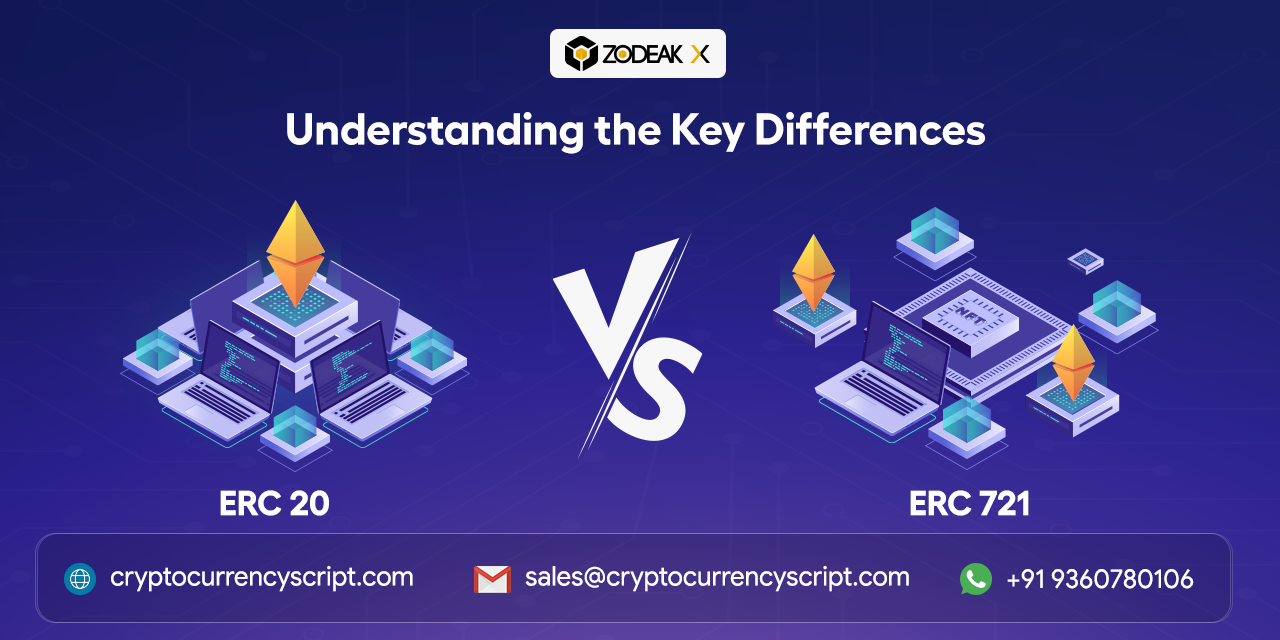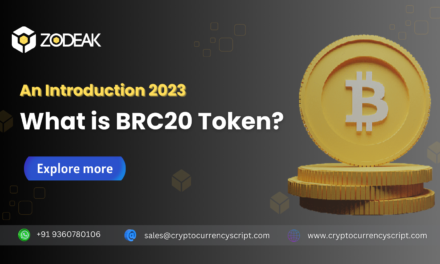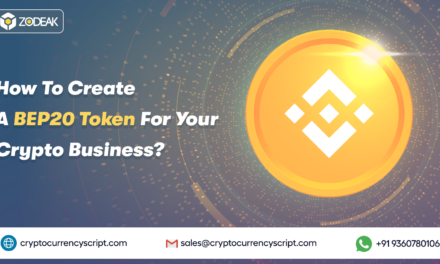Hello reader! Before getting into the ERC20 Vs ERC721 comparison, it is crucial to grasp the fundamental aspects of crypto tokens.
If you have ever engaged in a crypto-related online forum, you might have come across discussions revolving around crypto tokens. These discussions will clarify that not all tokens, fungible or non-fungible, have the same characteristics or are of equal value. However, what makes them different?
Generally, there are different token standards designed for different purposes within the same blockchain ecosystem. Ethereum serves as the foundational blockchain for the majority of cryptocurrencies, tokens, and dApps in existence today.
Example: Binance originated as a token in Ethereum and later created its own blockchain and native coin, ‘BNB’.
Within the blockchain realm, each program is specifically created with its native coins or tokens. In the case of Ethereum, it mainly relies on “ERCs”, the creation of tokens starts with unique standards residing in the network.
What is ERC in Ethereum?
The acronym ERC stands for Ethereum Request for Comments, it is like a law for an organization. It defines a set of rules, interfaces, and behaviors for specific functionality or characteristics of tokens that we build.
One of the most well-known ERC standards ERC20 and ERC721 defines the interface for fungible and non-fungible tokens on the Ethereum blockchain.
Now the question pops ups in your mind, what are fungible and non-fungible tokens? If not, skip the below paragraph and continue your reading…
Fungible tokens can exchange for other similar tokens and can be divided into smaller units. Non-fungible tokens, on the other hand, cannot be exchanged for each other NFT and are unique, indivisible.
If you want to clearly understand the ERC20 vs ERC721 comparison, you must first understand the basics of fungibility and non-fungibility. The ERC20 token standards set the rules for creating fungible tokens whereas the ERC721 set the rules for creating non-fungible tokens.
Let’s first look at the basics and move on to see the ERC20 vs ERC721 comparison.
ERC20 Vs ERC721 in terms of Concept
ERC20 defines a set of common criteria that Ethereum tokens must follow, allowing for easy interoperability between tokens. These rules govern how tokens are exchanged, how users can access token data, and how tokens should function.
ERC20 is the most frequently used standard for issuing tokens on the Ethereum network, and it has been accepted by the majority of decentralized applications and ICO fundraising.
ERC721 set of rules for creating, managing, and transferring NFTs on the Ethereum blockchain. In contrast to ERC20 tokens, each ERC721 token has its own set of attributes and values. These NFTs can represent anything from digital collectibles to in-game items, art, music, meme, and real estate.
Generally, ERC721 utilizes smart contracts to verify the ownership and authenticity of tokens. Each NFT is unique, with information about its ownership and creation ledger on the blockchain.
ERC20 Vs ERC721 in terms of Components
Both ERC20 and ERC721 are Ethereum token standards, but they differ in terms of their components and functionality. Several important components make up an ERC20 and ERC721 token are:
ERC20 components include name, symbol, decimal, total supply, approve, allowance, and transfer. These components form the basis of the tokens and smart contracts provide a standard way to communicate with each other on the blockchain.
ERC721 components include a contract interface, token ID, metadata, contract functions, events, and approvals. By incorporating these components, ERC 721 offers an open and decentralized platform for the creation and trade of digital collectibles in the blockchain.
ERC20 Vs ERC721 in terms of Benefits
ERC20 and ERC721 are two different standards and have their benefits and use cases in the blockchain. The choice between these standards mainly depends on the specific use case and requirements of the project or application.
Benefits of ERC20
Interoperability: Within the Ethereum ecosystem, ERC-20 tokens, constructed on the Ethereum network, facilitate easy trading with other ERC-20 tokens, promoting seamless interoperability.
Programmability: ERC-20 tokens possess a standardized collection of functions and events, empowering developers to program these tokens to execute specific tasks within smart contracts.
Liquidity: With its substantial size and active participation, Ethereum stands as one of the largest blockchain networks, offering a vast reservoir of liquidity for ERC-20 tokens.
Security: The Ethereum blockchain boasts robust security measures and reliability, establishing a secure foundation for ERC-20 tokens.
Extensive Adoption: The ERC-20 token standard has garnered immense adoption, evidenced by the presence of thousands of tokens built on the Ethereum network.
Benefits of ERC721
Non-fungibility: Every token possesses distinct characteristics and is indivisible, allowing for the creation of exclusive and singular digital assets.
Ownership verification: The blockchain readily verifies the ownership of each token, simplifying the process of confirming who possesses it.
Liquidity: Unique digital assets can freely buy, sell, or trade on decentralized exchanges, enhancing their liquidity and facilitating market transactions.
Programmability: Tokens can be program with specific functions and behaviors, such as establishing scarcity or promoting collectibility, enabling customization and unique features.
Interoperability: ERC-721 tokens find utility across various applications, including gaming, collectibles, and digital art, showcasing their compatibility and versatility within different contexts.
Below let’s table ERC20 vs ERC721 token standards and make a comparison for better understanding.
Comparison: Ethereum ERC20 Vs ERC721
| Point of Comparision | ERC20 | ERC721 |
| Token Nature | Fungible & each token is interchangeable | Non-fungible & each token is unique and has its value |
| Token Structure | Uniform structure, that all tokens adhere to the same set of rules and guidelines | More complex structure, with each token holding distinct characteristics |
| Token Creation | A bulk number of tokens can be created | Each token is created individually |
| Token Ownership | Tokens are owned collectively | The token has a single owner |
| Token Transfer | Easily transferrable and tradable in exchanges | Complex transfer process & are not suitable for trading on exchanges |
| Functionality | Well-suited for utility tokens, payment systems, and token economies | More suitable for ownership, provenance, and unique attributes |
| Interoperability | Easily integrated with popular wallets, DEX, and other applications | Offer the potential for cross-platform interoperability, allowing assets to be traded |
| Interchangeability | Allow any token to be substituted with another of the same type and value | Non-interchangeable, each token has unique value, metadata, & Ownership |
| Use cases | Used for crowdfunding, DApp stablecoins, & token-based blockchain programs | Used for tokenizing unique assets such as collectibles, real estate, and art |
| Example | BudBlockz, UniSwap, 0x (ZRX), Chainlink, Tether | Ethermon, MyCrypto, Cryptodoggies |
As final inference, the project’s objectives and the sort of use case will determine whether to adopt ERC20 or ERC721. ERC20 is the best option for projects that want to raise capital and release tokens that are simple to trade.
Whereas ERC721 is a better option for applications that aspire to represent unique and valuable digital assets. Besides, some projects might decide to combine the two token standards to get the most out of each. In the end, the developer or Ethereum token development company should choose the appropriate standard and apply it to the project.





